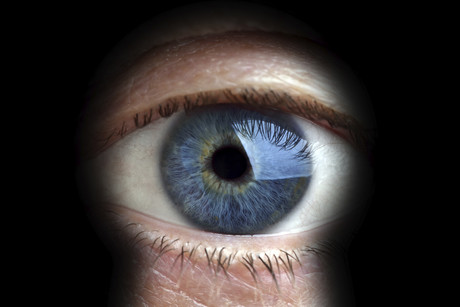By Annette Hoskin* and Prof Stephanie Watson**
Monday, 10 September, 2018

Which of the five senses is the most important to you?
Vision plays a critical role in every part of our lives, contributing up to 80% of the information we process. Therefore, it’s no surprise that most people will indicate their vision as their most valuable sense.
Despite this, eye injuries are still a common occurrence with more than 55 million people across the globe suffering a potentially vision-threatening eye injury every year.
Eye injuries in the workplace come at a high cost, not only for workers, but also their families, their employers and the community. An eye injury can lead to permanent loss of vision as well as lost days at work, reduced productivity, and medical and workers compensation costs.
After a penetrating trauma to the eye (open-globe injury), patients report more difficulty reading, doing their favourite hobby or working in their usual job, with 40% unable to return to their previous job.
The direct economic cost of an eye injury should be viewed as the ‘tip of the iceberg’, since a patient may be left with life-long social and economic consequences following their injury.
But, up to 90% of eye injuries are preventable with the correct eye protection. And the cost and time invested in wearing the correct eye protection more than outweighs the consequences associated with not protecting your eyes.
Who is at risk?
Many occupations are at risk of an eye injury — mining, manufacturing, construction, agriculture, forestry and fishing are some of the industries where workers most commonly sustain an eye injury at work.
Males and young and inexperienced workers are also more likely to suffer an eye injury at work.
People who have had an eye injury are at higher risk of a further eye injury and should take special care ensuring eye protection is always worn.
Studies have shown that people with uncorrected or reduced vision are at more than 60% increased risk of an occupational injury. Those with high myopia or short-sightedness are also more likely to have an eye injury when exposed to hazards at work. With the ageing workforce, it is important to ensure the older worker’s distance and near visual needs are met with the best prescription eye protection.
Providing the best eye protection
A common myth is that regular spectacle lenses provide some level of eye protection. However, regular spectacle lenses should never be used for eye protection. When undertaking hazardous activities, regular spectacles or sunglasses can be even more hazardous to the wearer, as lenses can shatter into fragments when hit by blunt objects.
A hazard assessment should be undertaken and eye protection appropriate to the task should be worn.
Fit and comfort are important for compliance and it is important that employees are given buy-in to procurement decisions to ensure that the most appropriate eye protection solution is provided.
Eye protection certified to meet the Australian Standard (AS1337) provides the best guarantee of protection, with medium-impact protection a good choice for all around protection. Certified products are regularly tested for optical, transmittance and impact qualities with manufacturing of the frames, lenses and complete products regularly audited to ensure protective characteristics and quality are maintained.
For workers who require spectacle correction, many options are available. When eye protection is needed, the best option for vision, fit, comfort and coverage is custom-made prescription eye protection that complies with AS/ NZS1337.6.
Contact lenses can be worn in most circumstances when accompanied by the appropriate eye protection but should never be considered as a form of eye protection. In some industrial situations, eg, when dust or harmful liquids or gases are present, there may be additional consequences if eye protection fails when contact lenses are worn.
It is important to review eye protection regularly to ensure that it is fit for purpose. With age and accidental damage, eye protectors can deteriorate. Airborne chemicals and commonly used substances such as sunscreen can damage the frame and lenses.
It is generally recommended that eye protectors be replaced every two years, unless evaluated as satisfactory for continued use. Similar to the way helmets are replaced after an accident, eye protection exposed to an impact should also be replaced.
Primary first aid
In the case of an eye injury, it is important to seek medical advice as quickly as possible. For chemical splash, particularly when alkalis are involved, irrigate the eye as much as possible while promptly seeking medical attention. For penetrating eye injuries, particularly where the object is protruding such as a hook or nail, immobilise the eye and object as much as possible while promptly seeking medical attention.
Don’t forget the sun
Australia has some of the highest rates of sun cancer in the world. Therefore, when spending long hours in the sun, protection from ultraviolet (UV) light is critical. Exposure to the sun’s UV rays has been linked to cataracts, macular degeneration, pinguecula, pterygia and photo keratitis. Outdoor workers are particularly at risk and should be encouraged to slip, slop, slap and slide on a pair of eye protection that incorporates UV and glare protection.
**Prof Stephanie Watson, RANZCO Fellow, Professor Clinical Ophthalmology & Eye Health, Central Clinical School and Sydney Medical School Foundation Fellow.
Supporting the wellbeing of Australia's firefighters
Academics Dr DAVID LAWRENCE and WAVNE RIKKERS detail their continuing research in the area of...
Software-based COVID-19 controls help protect onsite workers
The solution decreases COVID-19-related risks by ensuring that contractors and visitors are...
Spatial distancing rules: are they insufficient for health workers?
Researchers have revealed that the recommended 1- to 2-metre spatial distancing rule may not be...









